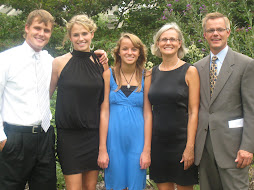In response to the film, The Mission, please write a thoughtful, cohesive, organized essay using the following thesis statement:
The Mission, a great work of literature, deserved its 1987 Academy Award for best cinematography.
Your four paragraph essay should focus on both literary elements of the film (character development, theme, dialogue, and symbolism) and cinematic elements of the film (types of shot, camera angles, camera movement, editing, and lighting). You will choose two literary elements for the body paragraph on "The Mission is great literature because . . ." And you will select two cinematic elements for the body paragraph on "The Mission deserved its cinematography Oscar because . . ."
Each body paragraph will have two PIEs, with a PIE devoted to each element discussed.
Make a POINT about each element. ILLUSTRATE the point with a specific example from the film. And EXPLAIN the illustration and point by commenting on the effect on the viewer.
Again, when discussing literary and cinematic elements, be sure to explain the significance and effect of the element, rather than just state that it was present in the film.
Your essay is due Tuesday, April 27.
Thursday, April 23, 2009
Friday, April 10, 2009
"My Mother Pieced Quilts"
Below is your assignment for Monday, April 13.
First reading of the poem "My Mother Pieced Quilts" . . .
Second reading . . .
Read poem again and take key word notes.
The key word notes strategy involves writing down two or three words per box that summarize the big ideas of that section of the poem.
Answer the following questions about the poem . . .
1. Who is the speaker of the poem?
2. To whom is the speaker speaking?
3. Describe the speaker’s family.
4. Describe 4 sources of fabric for the quilts.
5. Reread lines 51-54. Who are “they”? In what way are they… armed? ready? shouting? celebrating?
6. Describe the theme of the poem.
A stylistic analysis of the sense of the poem . . .
First reading of the poem "My Mother Pieced Quilts" . . .
- Note the poet’s name.
- Read the poem through once without taking notes.
- Break the poem down into four parts for key word notes.
- Make boxes for key word notes.
Second reading . . .
Read poem again and take key word notes.
The key word notes strategy involves writing down two or three words per box that summarize the big ideas of that section of the poem.
Answer the following questions about the poem . . .
1. Who is the speaker of the poem?
2. To whom is the speaker speaking?
3. Describe the speaker’s family.
4. Describe 4 sources of fabric for the quilts.
5. Reread lines 51-54. Who are “they”? In what way are they… armed? ready? shouting? celebrating?
6. Describe the theme of the poem.
A stylistic analysis of the sense of the poem . . .
- Read the poem for the third time because the more times you read a poem, the more you will understand it.
- Mark up your poem—identify and analyze elements of the poem based on the "sense" poetry terms we reviewed. In other words, identify similes, metaphors, personification, etc. and think about how that poetice devices enhances the meaning of the poem. We will discuss these sense terms in class.
- Look at the list of sense terms in the blog post below.
Wednesday, April 8, 2009
Poetry Terms 4-Square
For class tomorrow, April 9, you need to come to class with your poetic term 4-square completed. Remember to come to class before lunch tomorrow!!
Below are the tasks for the four squares:
Below are the tasks for the four squares:
- Image that represents the term
- Find and write the definition of the term in the context of poetry and cite your source.
- Write synonyms or a paraphrased definition (use your own words)
- Write an original line of poetry to illustrate the poetic term or find an example of the poetic term in the poems already studied in class.
You will take notes on all of the poetry terms presented by your classmates. You can go ahead and set up your next notebook page, listing the words and leaving a few lines to define each term in the context of the study of poetry.
Analyzing poetry is broken down into sound and sense. In other words, what does the poem sound like and what sense does the poet make in terms of themes and figurative language.
Here are the "sound" poetic terms:
Alliteration
Assonance
Consonance
onomatopoeia
End rhyme
couplet
Meter
accent
Rhythm
Scansion
Rhyme scheme
Stanza
Caesura
cacophony
Here are the "sense" poetic terms:
simile
metaphor
oxymoron
personification
tone
mood
figurative language
Irony
Imagery
symbol
Connotation
Denotation
Hyperbole
Speaker
theme
Subscribe to:
Comments (Atom)

